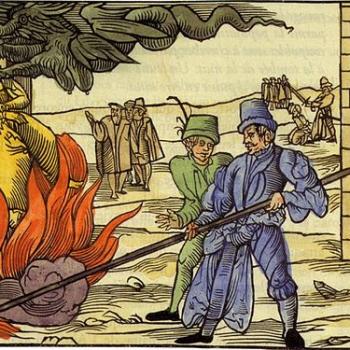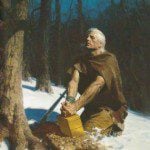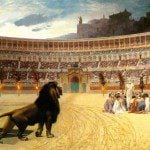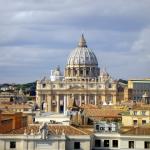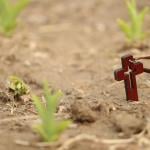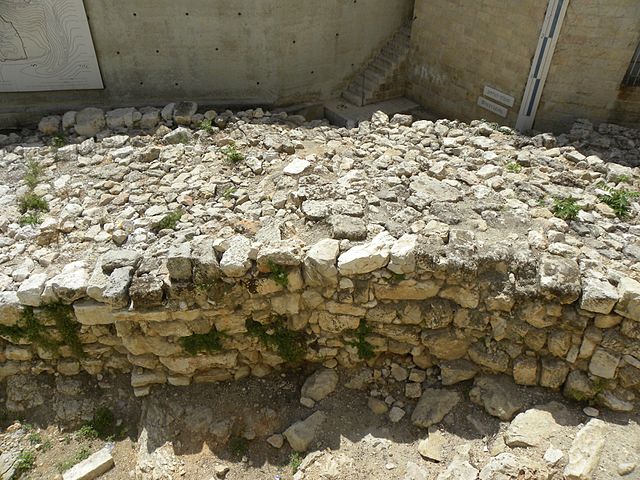
Christianity Today has an interesting article up, written by Gordon Govier, under the title “Top 10 Biblical Archaeology Stories of 2024: From a Mediterranean shipwreck to a mosaic on display in Washington, DC, these are the discoveries that made scholars of the biblical world say “wow” this year.” I share two of them here:
4. Redating a Jerusalem Wall
A wall once attributed to King Hezekiah is now thought to have been built earlier by King Uzziah. This indicates that Jerusalem was expanding even before a flood of refugees arrived after the Assyrian conquest of the northern kingdom of Israel in 732 BC.
While that reassessment adds valuable insight into the history of the city, it’s also a powerful example of what can be done with a creative combination of complementary technology to establish “absolute chronology.”
Radiocarbon dating, normally a boon to archaeology, doesn’t work very well for objects made during the Iron Age, due to a cosmic phenomenon known as the Hallstatt Plateau. This has limited the precise dating of archaeological discoveries in Jerusalem during its time as capital of the united Kingdom of Israel and then Judah. For a decade, archaeologists have worked to combine radiocarbon results in four different excavation areas with a precise single-year timeline derived from dendrochronology, the study of tree rings.
A portion of the wall that has heretofore been ascribed to the efforts of Hezekiah is clearly visible in the Jewish quarter of Jerusalem’s Old City, and I regularly walk my tour groups past it and tell them, among other things, that it is the city wall that Lehi and Nephi would have known.
It is also worth noting that Lehi (or, more likely, his immediate ancestors) could well have been a part of the influx of refugees that arrived in the area of Jerusalem around the time of the Assyrian conquest of the Northern Kingdom of Israel. The Book of Mormon describes his ancestry as deriving from Manasseh (see Alma 10:3), and the tribal inheritance of Manasseh was located in what eventually became the Northern Kingdom. There is, moreover, a distinct sense of distance, even alienation, in the narrative provided by 1 Nephi between Lehi and his family, on the one hand, and, on the other, “the Jews” among whom they lived. It is certainly conceivable, if Lehi emerged from a family that paid closer attention to the warnings of the prophets than the leaders and the general population of the Northern Kingdom generally did, that they might have fled southward even before the Assyrian conquest, just as 1 Nephi depicts Lehi and his own family as escaping the Southern Kingdom prior to its conquest by the Babylonians.
A final thought on this ancient wall: You may recall that Joseph Smith, finding mention of Jerusalem’s wall in the Book of Mormon text that he was translating but personally unfamiliar with the idea of city walls — neither Palmyra nor Manchester nor Harmony had one! — asked his wife, Emma, whether Jerusalem really had a wall around it. When she assured him that it did, he felt much better. He had wondered whether he was being deceived. (See here.)
3. The Start of the Alphabet
The earliest use of alphabetic writing has been pushed back 500 years through the discovery of four small fingers of clay in a tomb at Umm el-Marra in northern Syria. The tomb, which contained burials in gold and silver, was discovered in 2004 and carbon-dated to 2400 BC, the Early Bronze Age, when Umm el-Marra was a crossroad of trade routes between Aleppo and the Euphrates River.
Johns Hopkins University archaeologist Glenn Schwartz was positive about the dating but came slowly to the conclusion that he had found actual alphabetical writing. He went public with his conclusion at November’s annual meeting of the American Society of Overseas Research.
“Previously, scholars thought the alphabet was invented in or around Egypt sometime after 1900 BCE,” Schwartz said. “But our artifacts are older and from a different area on the map, suggesting the alphabet may have an entirely different origin story than we thought.”
Numerous references to writing in the Old Testament seem to indicate a level of literacy that archaeology has been slow to support. But recent developments, including the discovery that topped CT’s 2022 archaeology list, are providing a fuller picture of early literacy.
I’ve seen the argument many times, from both Evangelical Protestants and secularized former Latter-day Saints, that the teachings and standards of the Church of Jesus Christ of Latter-day Saints tend to foster unhealthy and guilt-ridden psychological responses among members of the Church. Thus, escape (or “recovery”) from the Church represents a health-bestowing, life-enhancing liberation.
I don’t doubt for a moment, of course, that some people (for any of a myriad of reasons) have responded and do respond to the doctrines and behavioral expectations of the Church in unhealthy ways. People react to all sorts of things in sub-optimal ways. But here is some interesting data and analysis from Justin Dyer and Michael Goodman: “Does religion lead to more or less perfectionism? Contrary to widely-held perceptions, data shows committed Latter-day Saints are less likely to experience an unhealthy focus on perfection, compared with other groups.” I located the article by Drs. Dyer and Goodman in the practically inexhaustible Christopher Hitchens Memorial “How Religion Poisons Everything” File™. Read it and weep.





